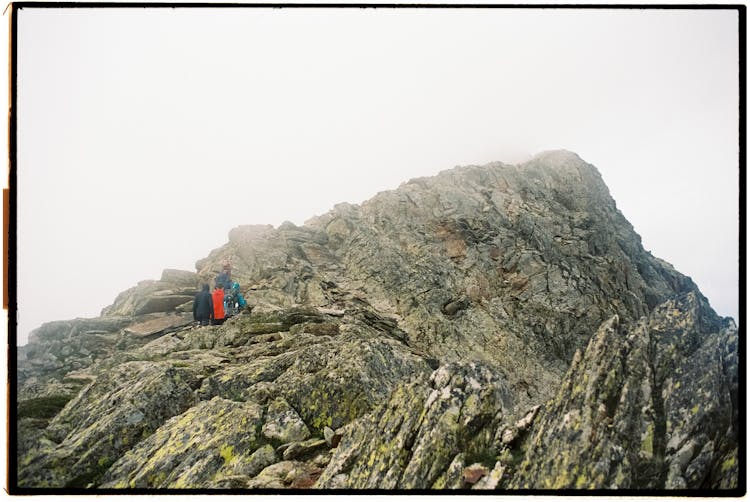All Categories
Featured
Assessing Trail Challenge
TLDR Summary:- 🏞️ Mountain trails are rated for difficulty based on several factors.
- 🚶♂️ Ratings help hikers choose suitable trails for their fitness level.
- 🌲 Understanding these levels ensures safe and enjoyable hiking experiences.
When embarking on an outdoor adventure, especially in mountainous terrain, comprehending trail difficulty levels is essential for a safe and enjoyable experience. The classifications help hikers gauge their abilities against varying trail challenges. Factors such as elevation gain, trail width, natural obstacles, and overall distance all influence these ratings, making it crucial for hikers to familiarize themselves with the grading system before setting out. Each hiking location might have its unique system, but general categories usually include easy, moderate, and difficult trails. Understanding these levels ensures that you don't bite off more than you can chew on your journey through nature’s wondrous landscapes.
Many hikers, particularly those new to the activity, often find themselves confused about what these ratings actually mean. A trail designated as “easy” typically signifies a well-maintained path that is relatively flat and free of significant obstacles. Safety, accessibility, and the overall conditions of the trails are also taken into account. Conversely, “moderate” trails usually represent a greater challenge, possibly featuring inclines, varying surfaces, and longer distances. Hikers must possess a reasonable level of fitness and basic knowledge of hiking techniques to navigate successfully. For example, the Great Smoky Mountains National Park Map is a fantastic resource for locating trails and understanding their challenges before heading out on an exciting adventure.
Once you dive into the more challenging “difficult” trails, the expectations increase significantly. These trails may require advanced skills, stamina, and several hours or even days to complete. Features like steep inclines, rugged terrain, and unpredictable weather conditions mandate that hikers have a greater grasp of survival skills, physical fitness, and adequate gear. Therefore, before attempting the most strenuous routes, consider fully preparing yourself through a series of easier trails and gradually increasing the challenge you take on. For those considering the stunning vistas of the Continental Divide Trail, doing so should be approached with great care and preparation.
Trail difficulty ratings can also vary widely between regions. What might be deemed a “moderate” hike in one area could be categorized as “difficult” in another. This inconsistency emphasizes the importance of local knowledge. Parks and trail associations play an invaluable role, often offering guidance on current trail conditions. Visitor centers and online forums can also provide additional insights about specific trails and their conditions. A helpful resource for understanding and navigating trails can be found in the book Best Easy Day Hikes Rocky Mountain National Park, which can guide hikers to easier options while they build their confidence and capabilities.
More than just physical ability, understanding the psychological aspects of hiking is crucial for meeting personal challenges. Trail difficulty must also encompass the mental endurance a hiker possesses. Being mentally prepared ensures that a hiker can push beyond their physical limitations when faced with strenuous segments of their chosen path. Tips for enhancing both physical and mental readiness include setting realistic expectations, practicing relaxation techniques, and fostering a positive mental attitude. Moreover, acclimatizing to the environment, especially when hiking at altitude, can make a significant difference in one’s performance and comfort level. Preparing your gear and ensuring safety nets on more difficult hikes can eliminate common worries, allowing you to enjoy the journey fully.
Engaging with the hiking community can offer invaluable insights and personal experiences. Online forums, blogs, and social media platforms provide an opportunity to connect with seasoned hikers who can share their stories, advice, and recommendations. Local hiking clubs often organize excursions catering to various challenge levels, allowing members to develop their skills and build confidence in a supportive environment. After all, hiking should not only be a fitness venture but also a spirited engagement with nature and a platform for camaraderie with fellow hiking enthusiasts. Resources like Hiking 101 Basics offer beginner tips that can enhance the journey.
As a hiker progresses, investing in quality equipment becomes increasingly important. Whether it’s selecting the right boots to ensure comfort or carrying appropriate gear for varying weather conditions, proper preparation can significantly impact the hiking experience. Trail maps and guides, like AMC's Best Day Hikes in the White Mountains, not only assist in route planning but also highlight difficulty ratings, ensuring that you are adequately prepared for your adventure. When all is said and done, aligning personal fitness with trail difficulty equates to a successful hiking experience, as both enjoyment and challenge synchronize in the heart of nature.
To conclude, comprehending mountain trail difficulty levels is not a mere triviality; it’s an integral part of outdoor education. Successfully aligning one’s physical readiness with trail ratings can guarantee not only personal satisfaction but also safety while navigating the great outdoors. Always remember to educate yourself on regional differences in trail grading, invest in professional maps and guides, and engage with fellow adventurers to enrich your experience. A wealth of knowledge exists within the hiking community. With that in mind, prepare well, stay safe, and above all, enjoy the breathtaking beauty each trail has to offer.
Key Takeaways:
- 🗺️ Understanding trail difficulty ratings is vital for safe hiking.
- 🎒 Equip yourself with the right gear matched to the trail's challenge level.
- 🌄 Joining local hiking communities enriches your experience.

Latest Posts
From Dull to Dazzling: Master the Art of Diamond Ring Cleaning
Unlocking the Ancient Art of Sound Therapy
Unlocking Your Potential: The Power of Growth Mindset